Unit 1 - General Psychology
1/113
There's no tags or description
Looks like no tags are added yet.
Name | Mastery | Learn | Test | Matching | Spaced |
|---|
No study sessions yet.
114 Terms
Psychology
the scientific study of the mind and behavior
empirical method
a systematic approach used in psychology to collect and analyze data through observation and experimentation.
Wilhelm Wundt and William James
founders of psychology
Wilhem Wundt used introspection; one of his students went on to develop structuralism
Established his psychology laboratory at the University of Leipzig in 1879, where him and his students conducted experiments on reaction times
William James helped establish functional psychology -> functionalism
Relied on more objective measures likes the use of various recording devices and examinations of concrete products of mental activities and of anatomy and physiology
Titchener
develops structuralism
introspection
a process by which someone examines their own conscious experience as objectively as possible to gain insight into their thoughts and feelings.
structuralism
a theoretical perspective in psychology that focuses on breaking down mental processes into their basic components and understanding how they interact. o ex: analyzing how someone describes the taste and texture of an apple
Edward Titchener
William James
developed functionalism
one of the few to establish functional psychology
saw that psychology’s purpose was to study the function of behavior in the world
Functionalism
The purpose (function) of behavior and mental processes – how they help us adapt to the environment. Ex: studying why we feel fear and how it helps us survive; more interest in the operation of the whole mind rather than the individual parts
William James
Sigmund Freud
Austrian neurologist fascinated by the patients suffering from “hysteria” and neurosis
theorized that many of his patients problems arose form the unconscious mind
pioneer of psychoanalysis, emphasized the impact of the unconscious on behavior.
his ideas were influential, many therapists believe in psychoanalysis but there are a few ideas of Freud that are controversial
Psychoanalytic Theory
focuses on the role of a person’s unconscious, as well as early childhood experiences
this perspective dominated clinical psychology for several decades
Sigmund Freud
Max Wertheimer, Kurt Koffka, Wolfgang Köhler,
founders of Gestalt psychology who emphasized understanding the mind as a whole.
Max Wertheimer, Kurt Koffka, Wolfgang Köhler,
Gestalt
perspective that emphasizes the organization of perception and thinking in a whole form, rather than as individual elements.
ex) a song may be made up of individual notes played by different instruments, but the real anture of the song is perceived in the combinations of these notes as they form the melody
Pavlov, Watson, Skinner
are key figures in behaviorism, focusing on observable behaviors and their conditioning.
Behaviorism
is a psychological approach that studies behavior through observable actions and interactions within the environment, often using conditioning as a method for behavioral change.
Pavlov, Watson, Skinner
Maslow, Rogers
are prominent figures in humanistic psychology, emphasizing personal growth, self-actualization, and the importance of subjective experiences.
Humanism
perspective within psychology that emphasizes the potential for good that is innate to all humans.
Maslow, Rogers
Ulric Neisser
develops cognitive psychology
Maslow’s Hierarchy of Needs
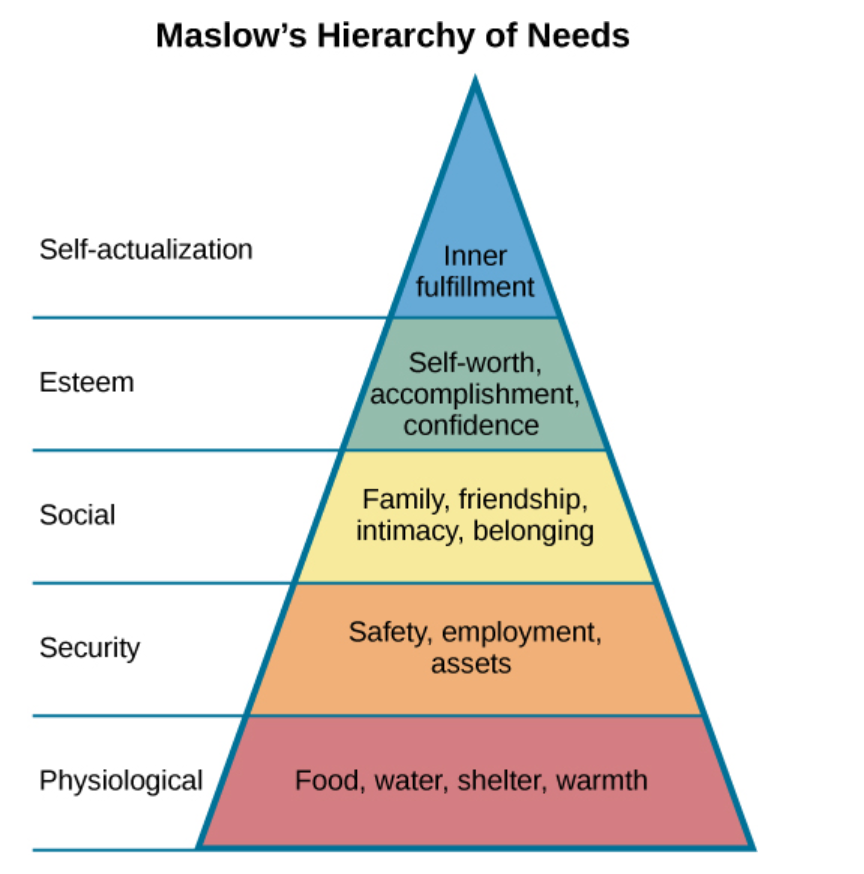
The Scientific Method
a systematic, empirical approach used to study behavior and mental processes. It ensures that psychological research is objective, replicable, and based on observable evidence.
1) Ask a question/identify a problem
2) form a hypothesis
3) conduct research/gather data
4) analyze the data
5) draw conclusions
6) report the results
7) replication
scientific method is circular
inductive reasoning
real-world observations lead to new ideas
Conclusions drawn from inductive reasoning may or may not be correct, regardless of the observations on which they are based
Ex: seeing apples, bananas, and oranges all grow on trees, therefore, you assume that all fruit must grow on trees
Scientists use inductive reasoning to formulate theories, which in turn generate hypotheses that are tested with deductive reasoning
deductive reasoning
ideas are tested in the real world
Descriptive (surveys, observations, and case studies)
used to describe behavior, not explain them
Strengths: helps gather rich, detailed information, great for generating hypotheses, and useful when experiments aren’t ethical or possible
Weaknesses: cant determine cause and effect, people may not be honest in surveys, observer bias or interpretation errors, case studies may not be generalizable to the larger population
Correlational research
looks for relationships between two variables — how they move together
§ Strengths: useful for predicting behavior, can study variables that can’t be ethically manipulated, easy to conduct with large groups
§ Weaknesses: correlation does not equal causation, may be affected by the third variables (confounding factors)
Experimental research
tests cause and effect by manipulating one variable (independent) to see its effects on another (dependent)
§ Strengths: only method that can show causality, controlled settings reduce confounding variables, random assignment increases reliability
§ Weaknesses: may not reflect real-world behavior, can be expensive or time consuming, ethical concerns in manipulating certain variables
informed consent
§ Participants must receive clear, understandable information about the study’s purpose, procedures, risks, benefits and confidentiality
§ Must voluntarily agree—and be free to withdraw at any time without penalty
risk-benefit analysis
§ The IRB ensures that potential benefits justify any risks. Physical, psychological, and financial harms must be minimized through study design and protective measures
privacy and confidentiality
§ The plan for collecting, storing and reporting data must protect participants’ identities and data privacy
§ Ensuring confidentiality is a major ethical consideration
use of description and debriefing
§ Description is necessary, it must be ethically justified and not harmful
§ They must be fully debriefed afterward—explaining why deception was used and what the study truly investigated
central nervous system
compromised of the brain and spinal cord
peripheral nervous system
Connects the CNS to the rest of the body
Made up of thick bundles of axons (called nerves): these carry messages back and forth between the CNS and everything outside the CNS
Two major subdivisions: the somatic nervous system and autonomic nervous system
Somatic nervous system
associated with activities traditionally thought of as conscious or voluntary
voluntary skeletal muscles
· Involved with in the relay of sensory and motor information to and from the CNS
· Consists of motor neurons and sensory neurons
· Motor neurons: efferent fibers; carries instructions from the CNS to the muscles
· Sensory neurons: afferent fibers: carries sensory info to the CNS
autonomic nervous system
controls our internal organs and glands
· Outside the realm of voluntary control
· Maintains the body’s homeostasis
· Sympathetic nervous system: prepares the body for stress-related activities
Fight or flight response
· Parasympathetic nervous system: returning the body to routine, day-to-day operations
semipermeable membrane
part of the nerve
neuron’s outer surface that allows smaller molecules and molecules without an electrical charge to pass through it, while stopping larger or highly charged molecules
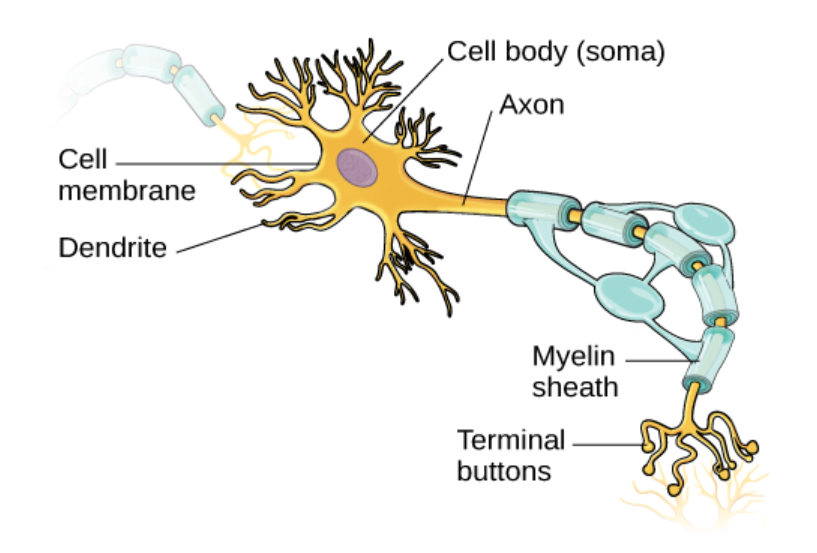
cell body/soma
part of the nerve
where the nucleus of the neuron is located

dendrites
part of the nerve
serve as input sites where signals are received from other neurons. these signals are transmitted electrically across the soma and down the axon
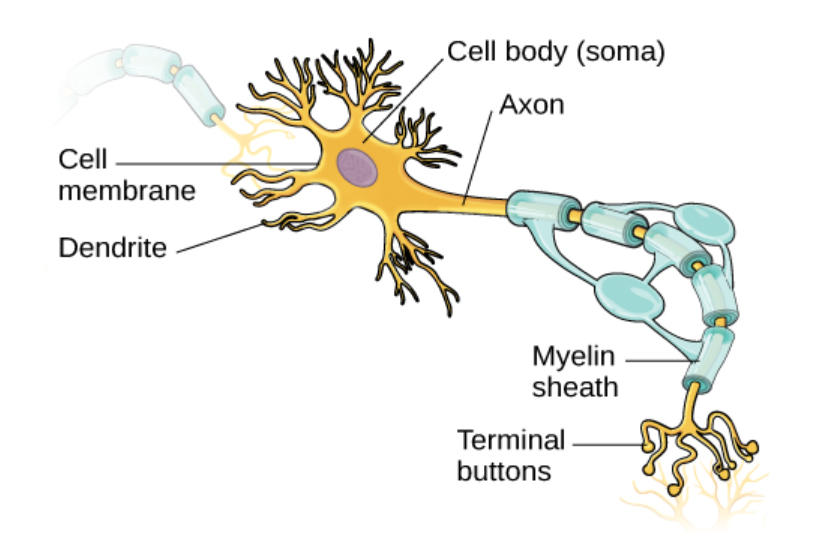
axon
part of the nerve
major extension of the soma
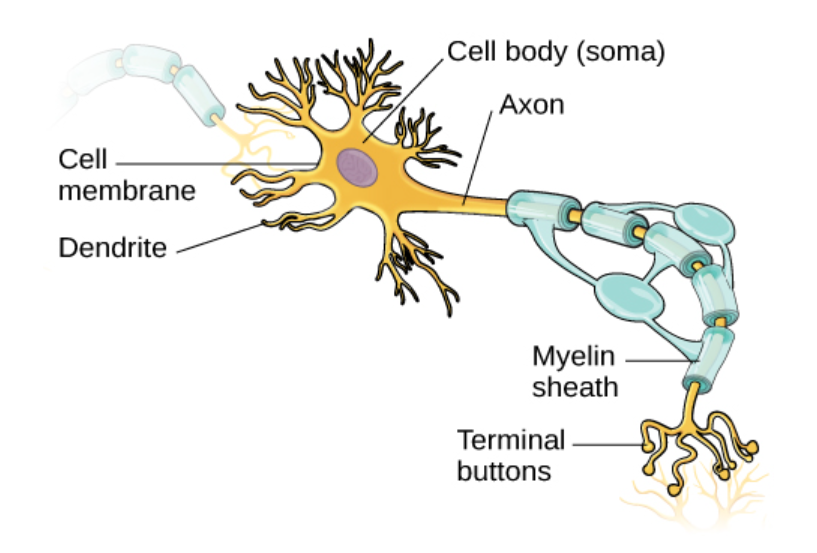
terminal buttons
part of the nerve
contain synaptic vesicles that house neurotransmitters, the chemical messengers of the nervous system
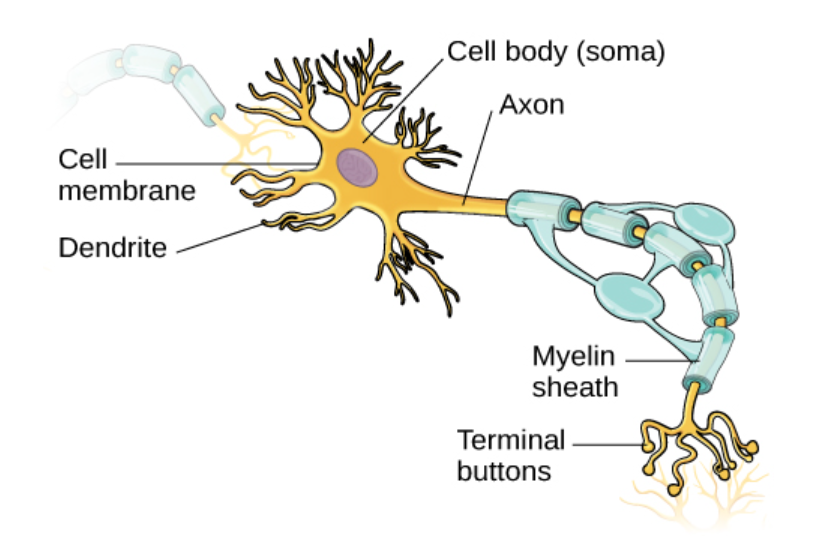
action potential
Electrical signal that typically moves from the cell body down the axon to the axon terminals
Additional pores open -> causes massive influx of Na+ ions and huge spike in membrane potential
At the peak of the spike, the sodium gates close and the potassium gates open, causing positively charged potassium ions to leave
Cell quickly begins repolarization
First, hyperpolarizes, becoming slightly more negative than the resting potential, and then it levels off, returning to the resting potential
sodium potassium pump
Actively transports three sodium ions out of the cell for every two potassium ions in
Creates a net negative charge inside the cell compared to the outside
Provides additional force on sodium, causing it to move into the cell
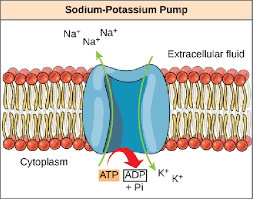
neurotransmitters
chemical messengers of the nervous system
acetylcholine
increases arousal, enhances cognition; involved with muscle action and memory
beta-endorphin
o decreases anxiety, decreases tension; involved with pain and pleasure
dopamine
increases pleasure, suppresses appetite; involved in mood, sleep, learning
gamma-aminobutyric acid (GABA)
decreases anxiety, decreases tension; involved with brain function, sleep
glutamate
increases learning, enhances memory; involved with memory and learning
norepinephrine
increases arousal, suppresses appetite; involved with the heart, intestines, alertness
serotonin
modulates mood, suppresses appetite; involved with mood and sleep
Frontal Lobe
located in the forward part of the brain; involved with reasoning, motor control, emotion, and language
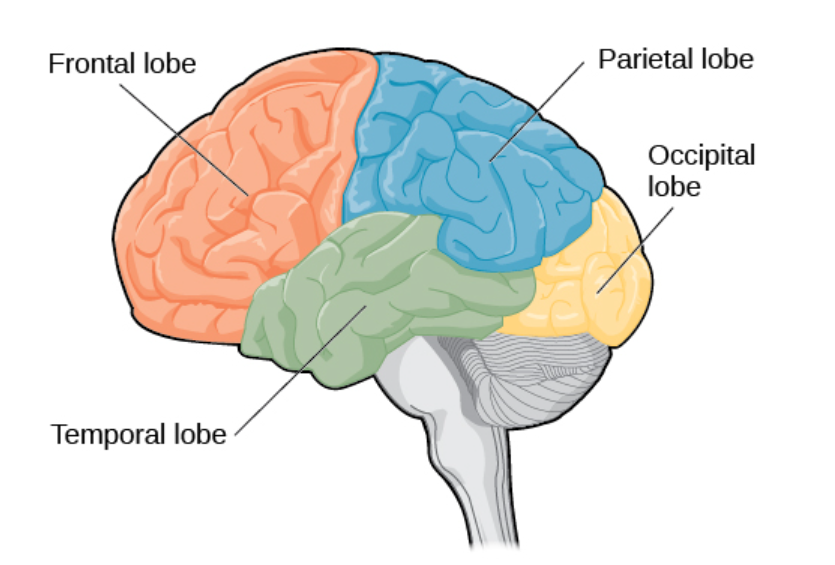
parietal lobe
behind the frontal lobe; involved in processing information from the body’s senses
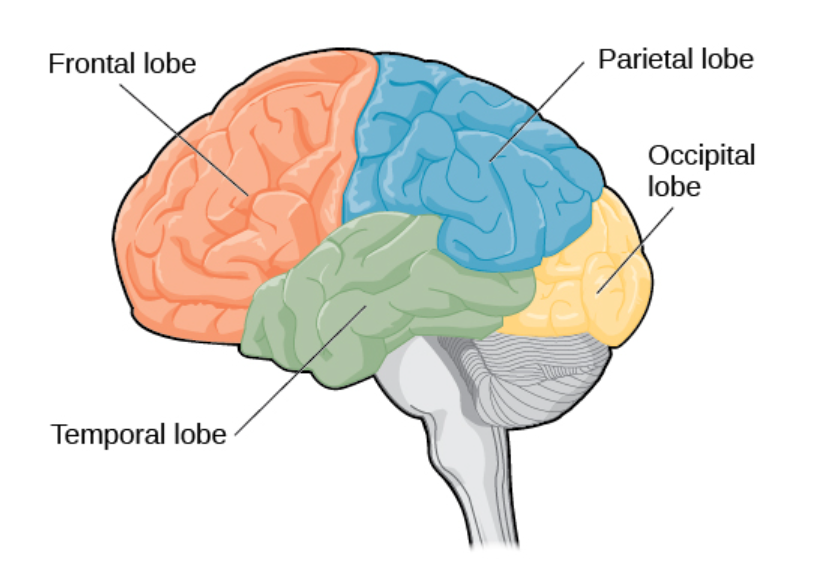
temporal lobe
located on the left side of the head; associated with hearing, memory, emotion, and some aspects of language
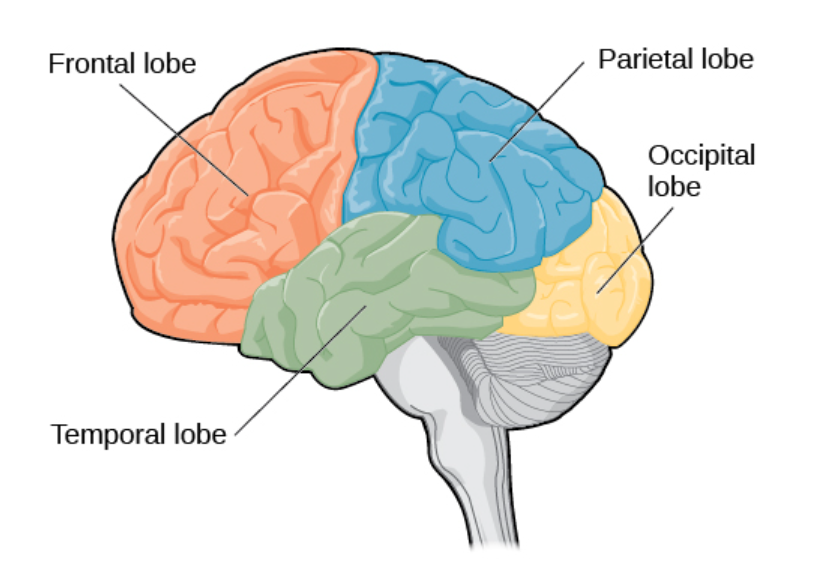
occipital lobe
Located at the very back of the brain, contains the primary visual cortex, which is responsible for interpreting incoming visual information
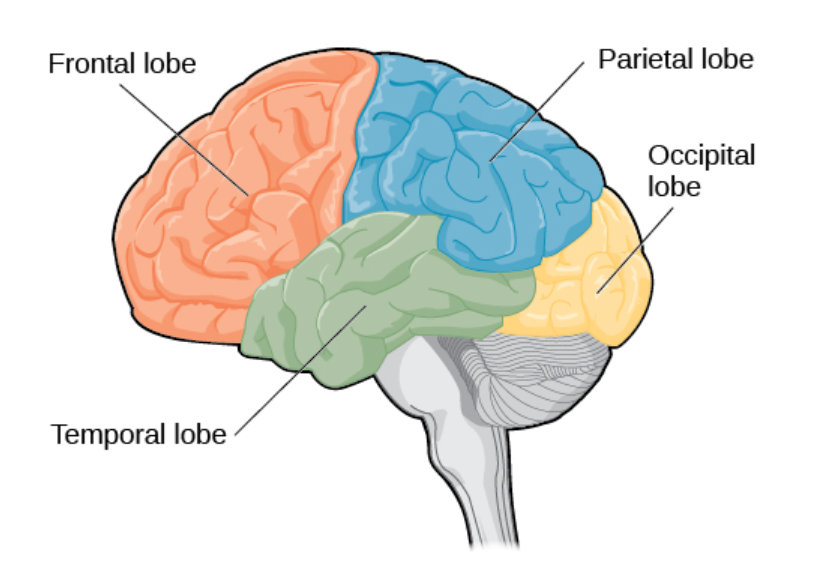
cerebral cortex
o surface of the brain that is very uneven; associated with higher level processes such as consciousness, thought, emotion, reasoning, language, and memory
gyri
o pattern of folds or bumps on the brain
sulci
grooves on the brain
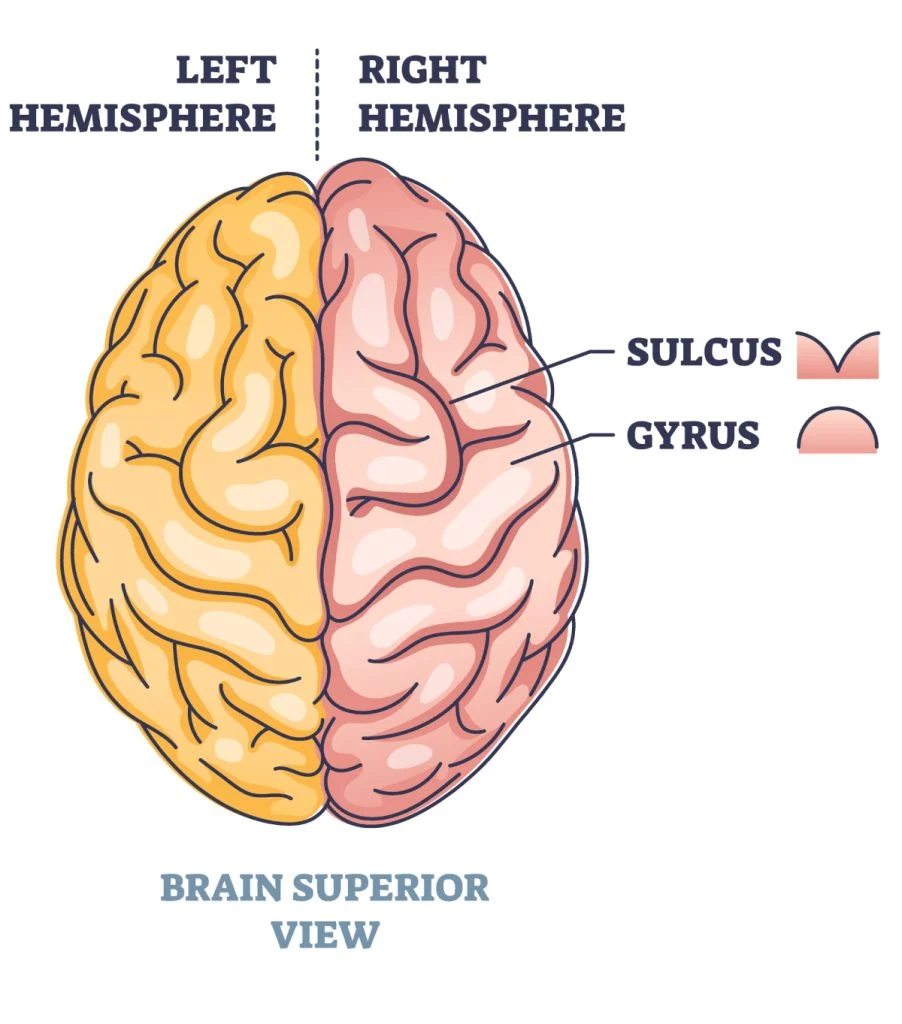
longitudinal fissure
the deep groove that separates the brain into two halves or hemispheres
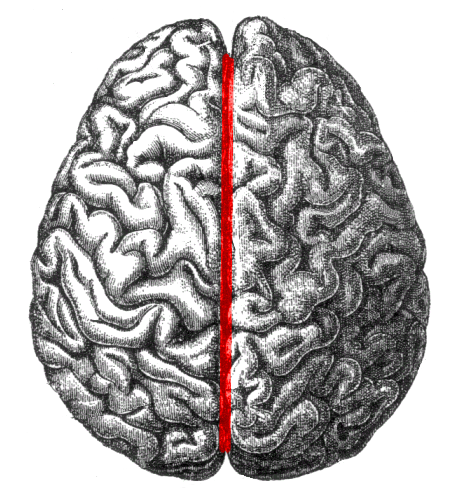
right hemisphere
controls the left half of the body; pitch perception, arousal and negative emotions
left hemisphere
controls the right half of the body; forms associations in memory, selective attention, and postive emotions
corpus callosum
connects the two hemispheres with a thick band of neural fibers, consisting of about 200 million axons. It allows the two hemispheres to communicate with each other and allows for information being processed on one side of the brain to be shared with the other side
forebrain
largest part of the brain, containing the two hemispheres, cerebral cortex and a number of other structures that lie beneath the cortex
motor cortex
involved in planning and coordinating movement
prefrontal cortex
responsible for higher-level cognitive functioning

Broca’s Area
essential for language production
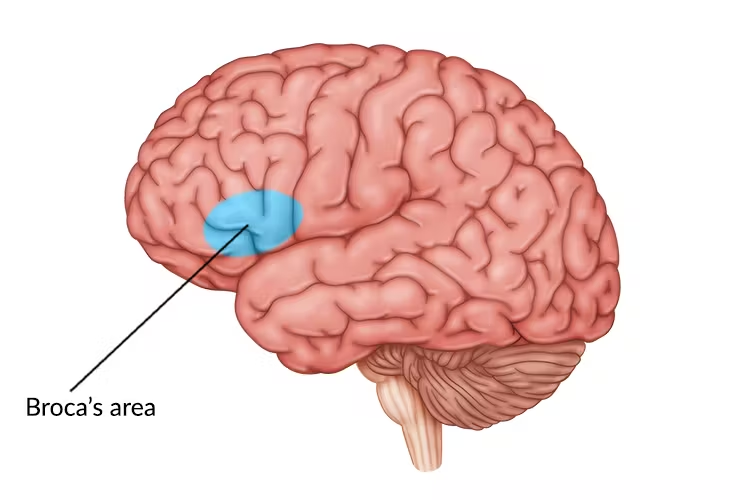
somatosensory cortex
processes sensory information from across the body, such as touch, temperature, and pain; processes touch and sensation
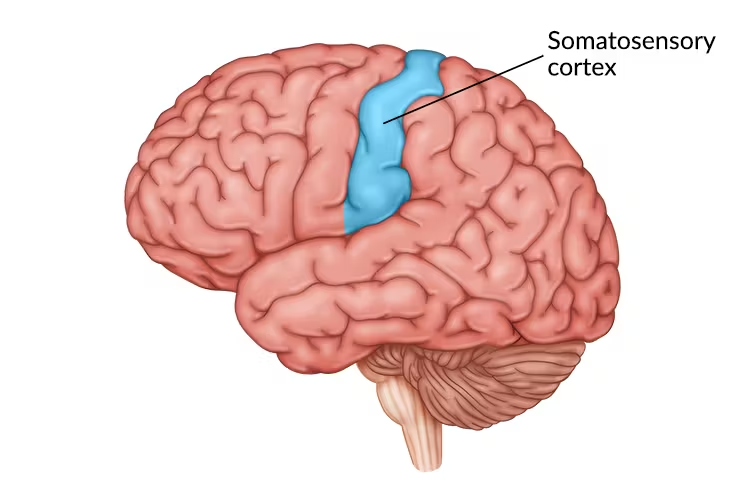
auditory cortex
main area responsible for processing auditory information
Wernicke’s Area
important for speech comprehension
thalamus
sensory relay for the brain; all of our sense, with the exception of smell, are routed through the thalamus before being directed of other areas of the brain for processing
limbic system
involved in processing both memory and emotion; the sense of smell projects directly to the limbic system where smell can evoke emotional responses in ways that other sensory modalities cannot.
hippocampus
essential structure for learning and memory
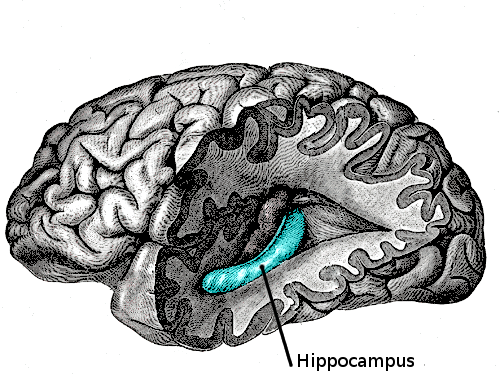
amygdala
involved in our experience of emotion and in tying emotional meaning to our memories
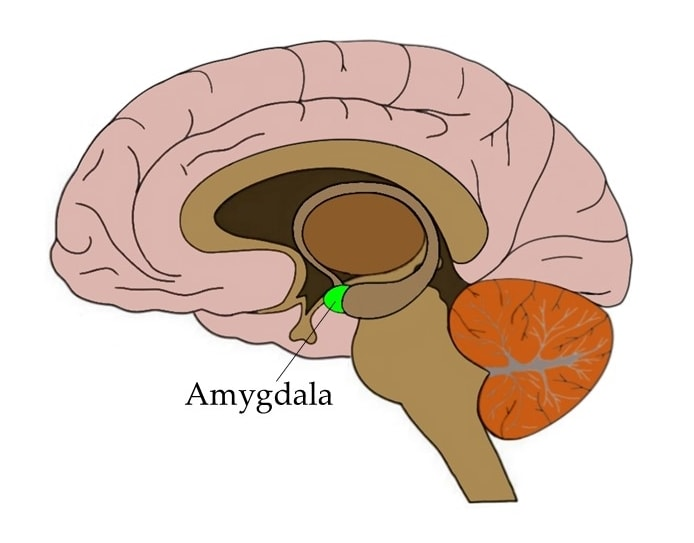
hypothalamus
o regulates a number of homeostatic processes, including the regulation of body temperature, appetite, and blood pressure; serves as an interface between the nervous system and the endocrine system, and in regulation of sexual motivation and behavior
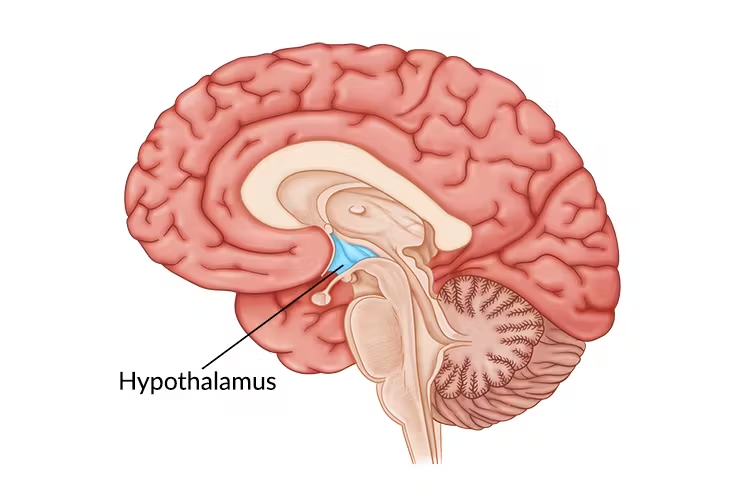
midbrain
o : comprised of structures located deep within the brain, between the forebrain and the hindbrain
reticular formation
o centered in the midbrain, important in regulating the sleep/wake cycle, arousal, alertness, and motor activity
Substantia nigra and ventral tegmental area (VTA)
produce neurotransmitter dopamine, critical for movement, involved in mood, reward, and addiction
Hindbrain
located at the back of the head; looks like an extension of the spinal cord

Medulla
controls the automatic processes of the autonomic nervous system, such as breathing, blood pressure, and heart rate
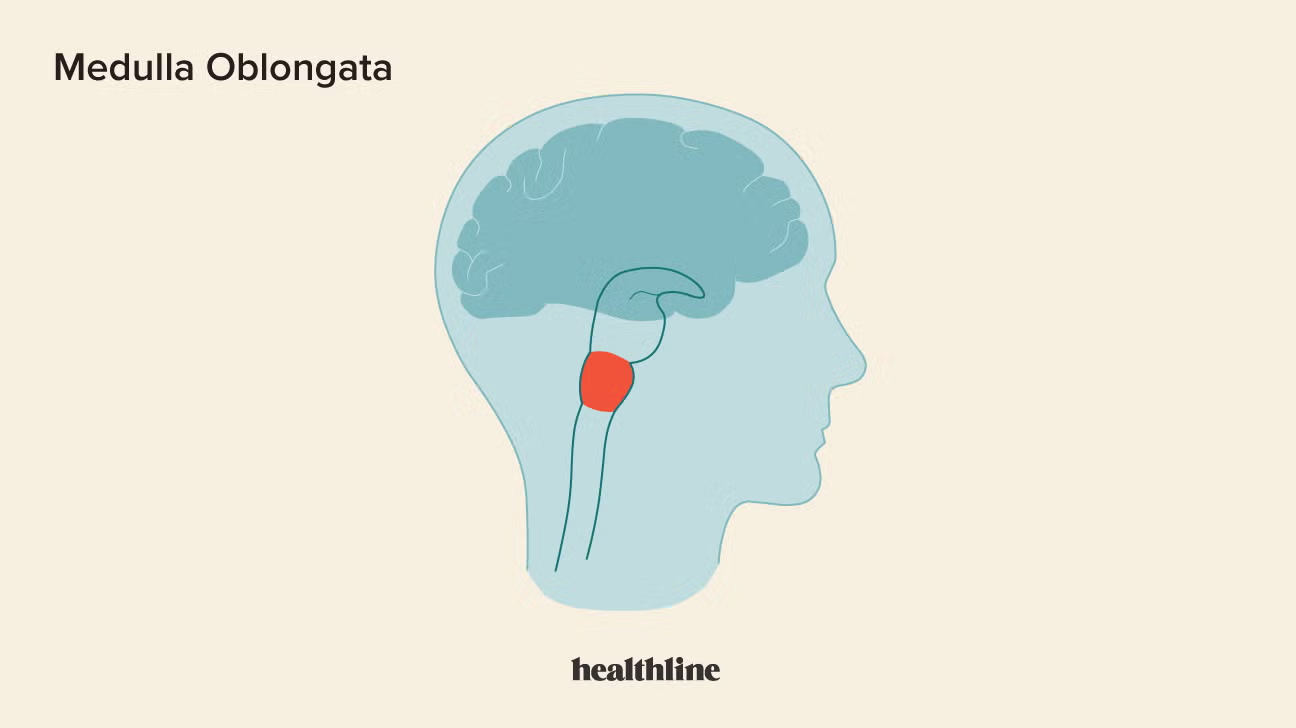
pons
connects the hindbrain to the rest of the brain; also regulates brain activity during sleep
cerebellum
receives messages from muscles, tendons, joints, and structures in our ear to control balance, coordination, movement, and motor skills
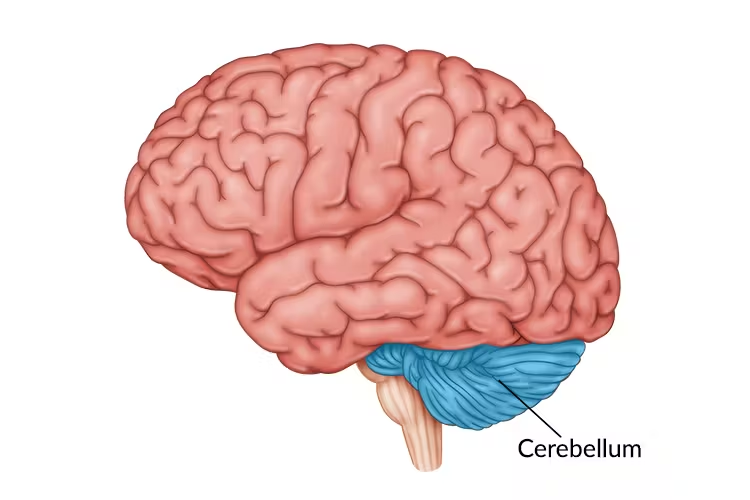
Phineas Gages personality
o An iron rod exploded out of a blasting hole into Gage’s face and through his skull when working as a railroad foreman in Vermont
o He was conscious and able to get up, walk and speak
o Months following his accident, his personality changed, he began to behave in odd and inappropriate ways
o Loss of impulse control—a frontal lobe function
o Also identified damages to the limbic system as he had difficulty controlling his emotional impulses
Endocrine system
Consists of a series of glands that produce chemical substances known as hormones
Is the body’s communication system that uses hormones to regulate and control various functions like growth, metabolism, mood and reproduction
consists of the pituitary, thyroid, adrenal and pancreas
Pituitary gland
part of the endocrine system
messenger hormone controls all the other glands in the system, mostly carries out instructions from the hypothalamus; also secretes growth hormone, endorphins for pain relief, and a number of key hormones that regulate fluid levels in the body
Thyroid gland
releases hormones that regulate growth, metabolism, and appetite
part of the endocrine system
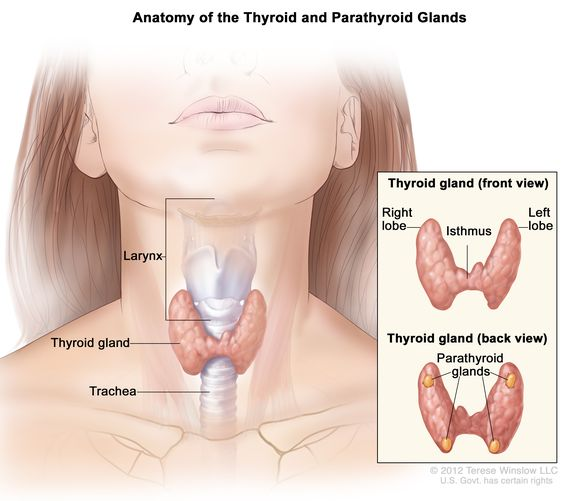
adrenal glands
secrete hormones involved in the stress response, such as epinephrine and norepinephrine
part of the endocrine system
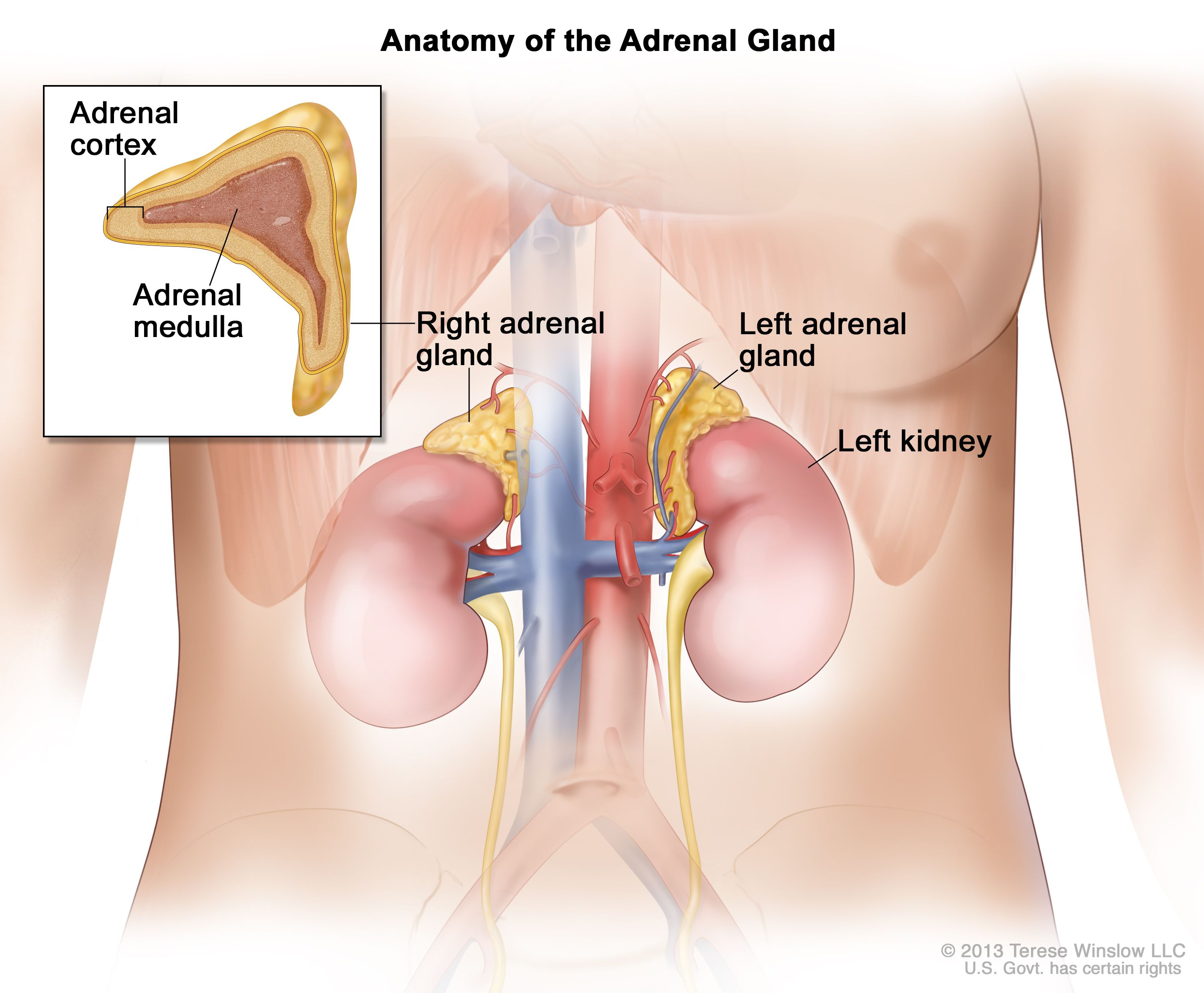
pancreas
internal organ that secretes hormones essential for maintaining stable levels of blood sugar throughout the day by lowering blood glucose levels or raising them
part of the endocrine system
gonads
secrete sexual hormones
part of the endocrine system
genetics on behavior and traits
o Inherited traits
o Some parts of your personality – like how outgoing, anxious, or aggressive you are can be partly inherited
o Conditions like ADHD, bipolar disorder, autism, and depression often run in families, showing a strong genetic link
o Can affect how easily someone learns, processes information, or remembers things
o Inherit a genetic predisposition to addictive behaviors or risk-taking
sensation
detection of physical stimuli by sensory receptors
perception
organization and interpretation of those sensations into meaningful experiences
reception
sensory receptors detect stimuli
part of 4-step sensory process
transduction
convert signals into neural impulses.
transmission
send impulses to the brain
four-step sensory process
perception
interpret signals consciously
absolute threshold
minimum stimulus detected 50% of the time
difference threshold (just noticeable difference, JND)
smallest detectable difference
Weber’s Law
just noticeable difference (JND) — the smallest detectable change in a stimulus — is a constant proportion of the original stimulus.
iris
colored muscle; adjusts pupil size to regulate light
pupil
opening for light entry in the eye
cornea
transparent outer layer; initiates focus in the eyes
rods and cones
rods handle low-light vision; cones detect bright light and color
color vision
cones operate via trichromatic (RGB-sensitive) and opponent-process systems
blind spot
where the optic nerve exits the retina—no receptors exist there, creating a small gap in vision